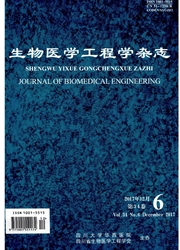

 中文摘要:
中文摘要:
慢性精神分裂症患者大脑的结构和功能异常已经被广泛报道,但是首发未用药精神分裂症患者和正常人的相关研究较少。本研究采集了44名首发未用药精神分裂症患者和56名正常人的结构和静息态功能磁共振图像,基于自动解剖标签模板提取了90个感兴趣区域的灰质体积、局部一致性、低频振荡振幅和度中心度作为特征,并将这些特征作为输入,用基于递归特征消除的支持向量机对首发未用药精神分裂症患者和正常人进行分类。结果表明,局部一致性和低频振荡振幅的组合为最佳分类特征,分类准确率达到96.97%,并且分类权重最大的脑区主要位于额叶。研究结果有利于加深对精神分裂症神经病理机制的了解,有助于开发出用于临床辅助诊断的生物学标记物。
 英文摘要:
英文摘要:
A great number of studies have demonstrated the structural and functional abnormalities in chronic schizophrenia (SZ) patients. However, few studies analyzed the differences between first-episode, drug-naive SZ (FESZ) patients and normal controls (NCs). In this study, we recruited 44 FESZ patients and 56 NCs, and acquired their multi-modal magnetic resonance imaging (MRI) data, including structural and resting-state functional MRI data. We calculated gray matter volume (GMV), regional homogeneity (ReHo), amplitude of low frequency fluctuation (ALFF), and degree centrality (DC) of 90 brain regions, basing on an automated anatomical labeling (AAL) atlas. We then applied these features into support vector machine (SVM) combined with recursive feature elimination (RFE) to discriminate FESZ patients from NCs. Our results showed that the classifier using the combination of ReHo and ALFF as input features achieved the best performance (an accuracy of 96.97%). Moreover, the most discriminative features for classification were predominantly located in the frontal lobe. Our findings may provide potential information for understanding the neuropathological mechanism of SZ and facilitate the development of biomarkers for computer-aided diagnosis of SZ patients.
 同期刊论文项目
同期刊论文项目
 同项目期刊论文
同项目期刊论文
 期刊信息
期刊信息
